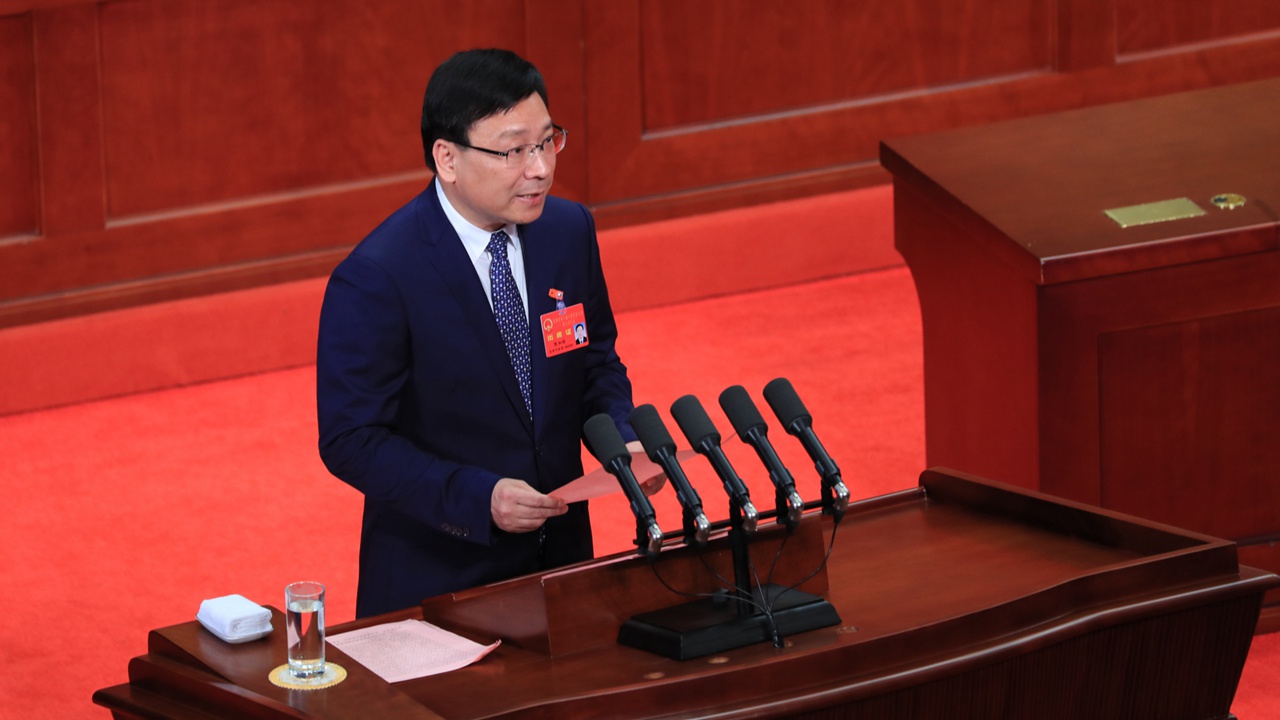City to spend more on education, health in 2020
Writer: Chen Xiaochun, Lin Lin | Editor: Holly Wang | From: Shenzhen Daily

Shenzhen Mayor Chen Rugui delivers a government work report at the opening meeting of the annual session of the city's legislature, the Shenzhen Municipal People's Congress, yesterday.
Shenzhen will increase expenditure on education and health care by 16 percent and 15 percent, respectively, this year, according to a government work report delivered by Mayor Chen Rugui at the opening meeting of the annual session of the city’s legislature yesterday.
The city will build, renovate or expand three hospitals to add another 8,000 hospital beds, and build, renovate or expand 32 public primary and middle schools to add 46,000 school seats. Among them, two will be public high schools, adding 6,000 school seats.
The city has set its GDP growth target for 2020 at around 6.5 percent, the report said.
“This year marks the 40th anniversary of the founding of the Shenzhen Special Economic Zone, and construction of the Guangdong-Hong Kong-Macao Greater Bay Area and a pilot demonstration area for socialism with Chinese characteristics being in full swing,” said Chen, addressing 456 deputies.
To fulfill the tasks, Chen said the government needs to deepen reform and opening up in a comprehensive way, implement the new development concepts of innovation, coordination, greenness, openness and sharing, and set the highest international standards as benchmarks.
The city’s general public budget revenue is expected to grow by about 4.5 percent this year. It plans to accomplish 40 concrete tasks aimed at enhancing residents’ livelihood and add 150,000 new jobs.
The city will control the urban unemployment rate within 3 percent and accomplish the target of energy conservation and emissions reduction. The minimum subsistence allowance will be raised to 1,200 yuan (US$172.9) per month, according to the report. The city will also construct no less than 80,000 government-subsidized apartments this year.
The city will build a total of 45,000 5G base stations to enable citizens to enjoy quality 5G networks. A total of 220 non-profit cultural events will be held to enrich the daily lives of citizens. The city will continue to build and renovate 30 parks to improve their quality.
Deputy Wang Xiaobin said during an interview that the increase of 6,000 high school seats is still far from enough and he hopes the government and all corresponding departments will work hard to accelerate the introduction of institutions of higher education to put into full practice the role of Xili Lake International Science and Education Town.
According to deputy Ni Weibo, living costs should be adjusted to a moderate level so that more talents will stay and settle down in Shenzhen. “The international atmosphere and the pace of life should also be adjusted.”
To build the city into a global capital of innovation, entrepreneurship and creativity, the government will explore the construction of international science and technology information centers and create a first-class innovation ecology that integrates original technologies, advanced innovative design and international services.
Additionally, the international talent management system will be reformed to attract more foreign talents, the report said.
To build the city into a model of urban civilization, the government will continue to build first-class cultural and sports facilities, develop emerging cultural industries, construct a demonstration tourism area, and promote the city’s cultural brands with international cultural and sporting events.
Other specific measures include building a zero-waste city, constructing an international transportation hub and building a global marine center.
Based on an initial estimate, Shenzhen’s GDP exceeded 2.6 trillion yuan in 2019 and its public revenue reached 942.4 billion yuan. The city’s general public budget revenue stood at 377.3 billion yuan, a rise of 6.5 percent year on year. The per capita disposable income of residents saw an 8.5 percent increase. The total profit growth of industrial enterprises above a designated size surpassed 10 percent. The annual number of newly registered commercial bodies reached higher than 500,000, bringing the total number of commercial entities to over 3.2 million. The city introduced 280,000 talents, which added resilience and injected new energy into the economy.